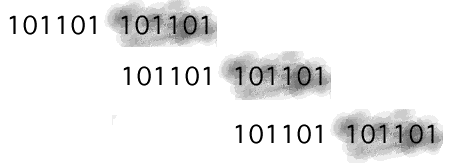
Suppose we wish to transmit the byte "10110010" over a communications link, then we may perhaps expect the signal corresponding to the byte to be distorted a little as it travels along the cable.
In fact, there are many different ways a byte may be distorted, some of which are represented below at three points along the cable. The crucial question is: "Will the receiver be able to recognise the signal it receives and associate it with the transmitted bit sequence?"
If the byte is correctly interpreted by the receiver at the end of the cable, we say that we have achieved error-free communication. If however, the receiver sometimes makes mistakes in interpreting the bits received, we say that bit errors have been introduced by the link.

The easiest effect to imagine is that as the signal travels along the cable, some of the signal fades away. In effect, the signal gets weaker, and weaker, the further it has to travel. This is known as attenuation.

Often the attenuation which is observed is not linear. If we view the frequency spectrum of the signal which was originally sent, we would see that some parts of the spectrum are attenuated more than other parts. This causes the shape of the received signal to change as it passes down the cable. In some cases, the level of distortion may be predicted (e.g. it may be a function of the type of cable used and proportional to the length of the cable). If the level of distortion is known, it may be compensated for by applying non-linear amplification (this is known as signal equalisation).
![]()
Attenuation and (predictable) distortion alone would not be a significant problem for error-free communication. They would simply require the use of ultra-sensitive receivers for long cables, or (more preferably) the use of amplifiers at strategic points along the length of the cable to restore the original signal. However, all communications systems also experience random noise which appears at the receiver to be mixed with the received signal. As the signal becomes attenuated, it approaches the level of noise (i.e. it becomes hard to differentiate the signal from the background random noise). Amplifying the signal also amplifies the noise, which grows with each stage of amplification.

The key to digital transmission is not the only to use amplifiers, but to use amplifiers as a part of regenerative digital repeaters. A repeater amplifies and equalises the received signal, and then digitally samples the signal to decode the bits being sent (i.e. recognises each bit in turn). Once decoded, the digital bits may be sent a fresh down the cable to the next repeater, regenerating a signal at the output of the repeater which is as good as the original sent signal. By using repeaters at suitable points along the cable (before the signal deteriorates below the level at which it may be reliably decoded), arbitrary long distances may be reached with little probability of bit errors.
Digital repeaters are therefore a key component of any long distance digital link.